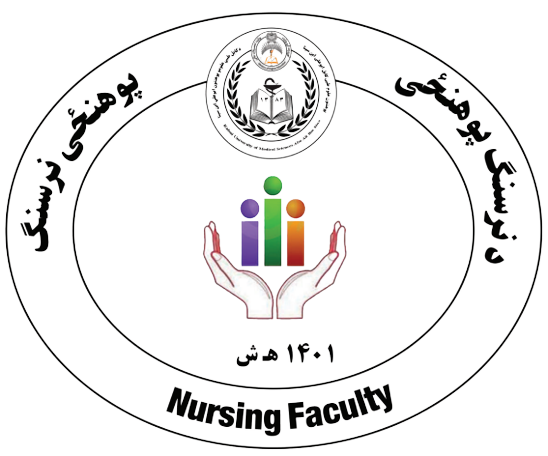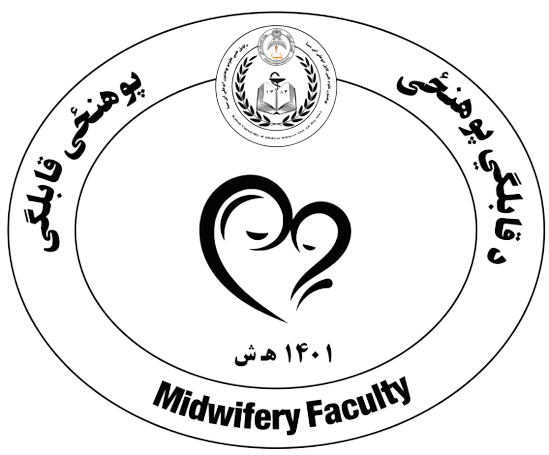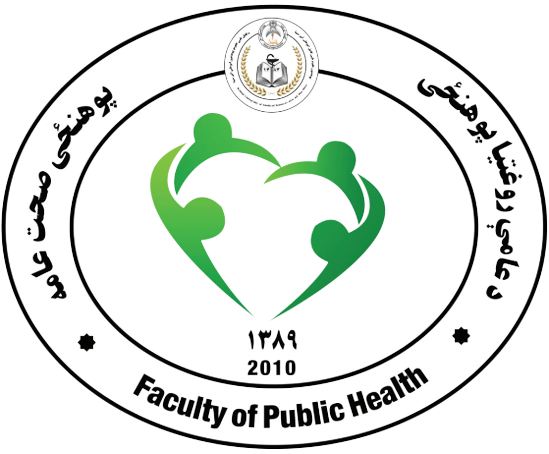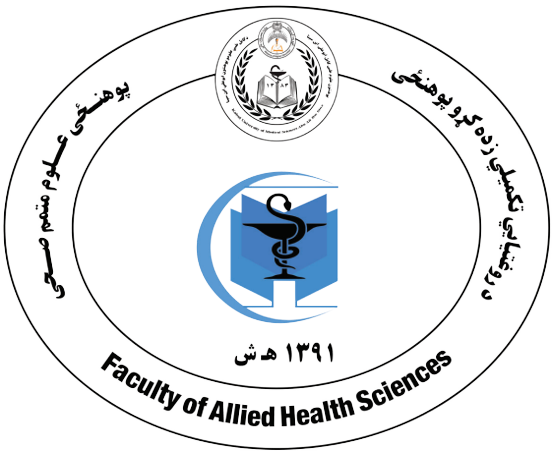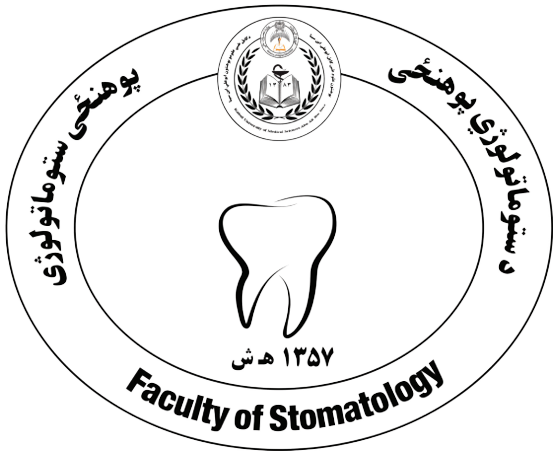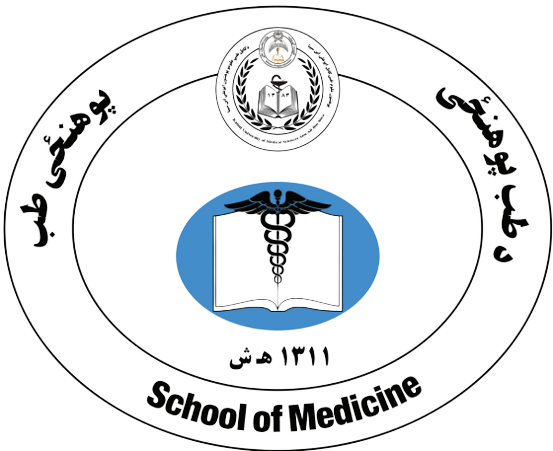About Afghan Medical Journal: The Afghan Medical Journal (AMJ) is an official international open-access peer-reviewed journal, certified by the ministry of higher education, with ISSN 3007-0805 (Online) and ISSN 3007-0791 (Print) numbers, and functions under the oversight of an editorial board of the Kabul University of Medical Sciences (KUMS). KUMS is the first ever medical and higher education institute established in 1932 as a faculty of medicine, in the country with a vision to building healthy and prosperous society through imparting higher medical education and empowerment societies.
The printed version of the journal was established about 7 decades ago and has since published 194 serial issues providing cutting edge knowledge in the medicine and public health. The AMJ specifically encourages the faculty, practitioners and students to make the new knowledge, they obtained through robust research methods, available by publishing in the AMJ for national and global readership for optimal impact. The new knowledge disseminated through the journal informs policies and programs that improve the health and wellbeing of the humans. Online publication of the journal as well as indexing with global online databases will increase its readership and audience multifold and consequently its impact will substantially increase.
Articles
Unveiling the Potential of Hematological Aberrations in HIV Infection as a Reliable Surrogate to Clinical Staging
Background: The global incidence of HIV has declined since peaking in the mid-nineties, mainly due to advancements in diagnostics, therapeutics, and global health initiatives. Despite these advancements, resource-limited countries still face challenges accessing timely diagnostic tests and treatments. Hematological assays are one of the most widely available and least expensive laboratory tests worldwide, often with a short test-to-report time. Objective: To evaluate common hematological abnormalities in newly diagnosed HIV patients and correlate these with the WHO clinical stages of HIV infection. Methods: A cross-sectional study was conducted at a tertiary care center in Kerala, India. Newly diagnosed HIV patients aged 15 years and above were enrolled, excluding those with chronic diseases or conditions affecting hematological profiles. Comprehensive evaluations, including hematological tests and WHO clinical staging, were performed. Statistical analyses assessed correlations between hematological parameters and clinical stages. Results: Among 120 patients (59.17% males, mostly aged 25-50), unprotected sexual contact was the primary transmission route. Mucocutaneous candidiasis and tuberculosis were the most common opportunistic infections. Hematological abnormalities included elevated erythrocyte sedimentation rate (81.7%), anemia (80%), reticulocytopenia (26.7%), and thrombocytopenia (14.2%). Hemoglobin, total leukocyte, lymphocyte, and CD4 counts significantly correlated with clinical stages. Hemoglobin levels showed a strong negative correlation with disease stage (r -0.827), with predictive values indicating stage severity. Similarly, lymphocyte counts and ESR showed significant correlations with advancing disease stages. Conclusion: Hematological parameters, particularly hemoglobin, lymphocyte counts, and ESR, significantly correlate with the WHO clinical stages of HIV infection. These findings support the utility of these parameters as surrogate markers for assessing disease severity, especially in resource-limited settings. Further research is needed to enhance diagnostic and treatment approaches in these regions.
Prevalence of Test Anxiety Among Public Health Students at Kabul University of Medical Sciences, Afghanistan: A Cross-Sectional Study
Test Anxiety (TA) refers to a collection of behavioral and cognitive responses accompanied by worries about negative outcomes in assessment situations. This anxiety can negatively impact students' academic performance and mental health. Given the importance of the topic, identifying the level of anxiety and the factors influencing it is essential for improving students' educational and psychological conditions. This research aims to investigate the prevalence of test anxiety among public health students at Kabul University of Medical Sciences and to identify the factors that influence it. Methods In this cross-sectional analytical study, a systematic sampling method was used to select students at public health faculty between September and October 2024. The level of test anxiety was determined using the Westside Test Anxiety Scale (WTAS). Descriptive analysis was used to calculate frequencies and percentages, while the chi-square test explored associations. Results Out of a total of 170 distributed questionnaires, 159 completed questionnaires were collected. The age range of participants was between 18 and 26 years, with the majority (81.1%) falling within the 20–23 age group. The findings revealed that 9.4% of participants had low test anxiety, 18.2% had moderate anxiety, 20.8% had high but within normal limits anxiety, 22.7% had relatively high anxiety, 15.7% had high anxiety, and 13.2% had very high anxiety. Statistical analyses showed that none of the variables, including age, academic year, economic status, marital status, and study method, had a significant effect on test anxiety levels. However, the study method and age showed relatively stronger associations with test anxiety, though these associations were not statistically significant. Methods In this cross-sectional analytical study, a systematic sampling method was used to select students at public health faculty between September and October 2024. The level of test anxiety was determined using the Westside Test Anxiety Scale (WTAS). Descriptive analysis was used to calculate frequencies and percentages, while the chi-square test explored associations. Results Out of 170 distributed questionnaires, 159 completed questionnaires were collected. The age range of participants was between 18 and 26 years, with the majority (81.1%) falling within the 20–23 age group. The findings revealed that 9.4% of participants had low test anxiety, 18.2% had moderate anxiety, 20.8% had high but within normal limits anxiety, 22.7% had relatively high anxiety, 15.7% had high anxiety, and 13.2% had very high anxiety. Statistical analyses showed that none of the variables, including age, academic year, economic status, marital status, and study method, had a significant effect on test anxiety levels. However, the study method and age showed relatively stronger associations with test anxiety, though these associations were not statistically significant. Conclusion This research demonstrates that test anxiety is widely prevalent among students of the Faculty of Public Health at Kabul University of Medical Sciences. Test anxiety's prevalence demonstrates its varying impacts on students, potentially hindering academic performance. The results highlight that test anxiety was more common among fourth-year students and those aged 22, suggesting that academic pressure in advanced years may heighten anxiety levels. These findings underscore the importance of addressing students' mental health and providing necessary support.
Prevalence of Deaths Due to Sharp Trauma in Forensic Cases in Kabul-Afghanistan
Abstract Background Trauma is truculence or hurt to living tissues that can affect both the physical and mental state [1]. There are different types of trauma (mechanical trauma, traffic trauma, burn trauma, electrical trauma) [2]. Sharp trauma is a type of Mechanical trauma, Sharp Trauma is injuries produced with weapons or objects with a sharp cutting edge or sharp tip edges, Generally sharp trauma is created by the simultaneous effect of the tip and edge of sharp objects, as the tip of the sharp objects penetrates the skin, produced wound (injury), and the edge of sharp objects lacerate tissues and caused expand of the wound [3]. So, this study aims to investigate the Prevalence of deaths due to sharp trauma in forensic cases at Kabul city referred to the Kabul Forensic Medicine Center from 2017 to 2019. Methods and Material This descriptive (cross-sectional) study was prepared on the death cases from 2017 to 2019 assigned to the Kabul Forensic Medicine Center. Data was collected and designed from the post mortem service, as secondary data and analyzed using SPSS version 26. Results This study revealed that during the years 2017 - 2019, a total of 4201 deaths were referred to the Kabul Forensic Medicine Center. Which 280 deaths (6.66 %) were caused by sharp trauma, Among 280 deaths, 248 cases (88.57 %) were males and 32 cases (11.42 %) were females. Regarding age, the majority of cases, 223 (79.64 %) young age group were young people aged 18 to 30. According to the location of the injured organ, most cases (150 cases, 53.57 %) occurred at the thorax and the highest number of deaths (27 cases, 9.64 %) due to sharp injuries occurred in the seventh district. Conclusion Based on this study, the maximum of death cases caused by sharp trauma were men and young individuals and occurred in the seventh district. In the majority cases injured, organs were thorax. Keywords: Sharp weapons, Sharp trauma, Death cases, Sharp objects
Assessment of Drug Awareness Among School Students in Kabul, Afghanistan: A Cross-Sectional Study
In the modern world, addiction and substance abuse are increasingly recognized as some of the most destructive social phenomena and health problems, alongside other social deviations, challenges, and health risk factors. This issue annually drives millions of people, particularly the younger generation, who are nations' essential resources and assets, toward destruction. The low level of awareness among individuals, especially youth and adolescents, about drugs, along with other contributing and aggravating factors, plays a significant role in the prevalence of substance abuse and addiction among young people. This study aims to assess the level of awareness regarding drugs among school students. Methods: This study was conducted as a descriptive cross-sectional survey on a sample of 363 students from two schools during the period from October to November 2024. The data were collected using the proportional quota sampling technique, and data were analyzed using SPSS 27. Results: Out of 363 distributed questionnaires, 350 were completed. The majority of participants 89.4% were aged 16-20 years. Among students, 57.71% had good awareness, 41.43% had average awareness, and 0.86% had poor awareness about drugs. The majority of students reported that their main sources of information about drugs were friends 50.86% and teachers 20.29%. A total of 14.3% reported having at least one addicted family member, and 67.4% were able to refuse drug offers. Analysis revealed significant relationships between age, marital status, and place of residence with awareness levels (p<0.001), while economic status and parents' education showed no significant association. Methods: This study was conducted as a descriptive cross-sectional survey on a sample of 363 students from two schools during the period from October to November 2024. The data was collected using the proportional quota sampling technique, and data were analyzed using SPSS 27. Results: Out of 363 distributed questionnaires, 350 were completed. The majority of participants (89.4%) were aged 16-20 years. Among students, 57.7% had good awareness, 41.4% had moderate awareness, and 0.9% had poor awareness about drugs. Friends (50.86%) and teachers (20.29%) were the main sources of information on drugs. A total of 14.3% reported having at least one addicted family member, and 67.4% were able to refuse drug offers. Analysis revealed significant relationships between age, marital status, and place of residence with awareness levels (p<0.001), while economic status and parents' education showed no significant association. Conclusion: This study identified the 16-20 age group as the most vulnerable yet receptive to drug awareness programs. The majority of the students had an average economic status, and most of them were single. Their main source of information about drugs was their friends, which raises concerns about the possibility of misinformation. While overall awareness was satisfactory, aspects like knowledge of drug consumption methods need improvement. Statistical analysis showed significant relationships between awareness levels and factors such as age, marital status, and place of residence. Strengthening the role of families and formal education in providing accurate information and reducing the negative influence of social networks is essential.
Prevalence of Oral Lesions in Dermatological Diseased Patients
Oral mucosal lesions often serve as early indicators of systemic dermatological diseases, yet remain under-investigated in clinical practice, particularly in low resource settings. This study aimed to evaluate the prevalence, types and site distribution of oral mucosal lesions among dermatological patients in Maiwand Teaching Hospital, Kabul, Afghanistan. Objective: A cross-sectional study was conducted from October 2024 to March 2025, involving 42300 patients coming to dermatology department and 858 patients diagnosed with oral lesion conditions. Oral examinations were performed to identify co-existing mucosal lesions, categorized by type and location. Data were analyzed using SPSS version 25.0, with descriptive statistics and chi-square tests to assess associations (p<0.05 considered significant). Result: Females constituted the majority of participants (64.1%), with the 41-50 age group being most affected. Candidiasis (26.5%) was the most frequent oral mucosal lesion, followed by lichen planus (19.7%) and pemphigus vulgaris (16 %). The tongue was the most commonly involved site in the oral cavity (64%), and plaque formation (56.2%) was the most prevalent lesion type. Bullous lesions showed a statistically significant association (p=0.024), highlighting their diagnostic importance in vesiculobullous disorders.
Prevalence of Tongue Lesions in Stomatology Teaching Hospital- Kabul, Afghanistan
The tongue plays a critical role in oral and systemic health, often serving as a mirror of underlying pathologies. Despite its diagnostic importance, limited data exist on tongue lesions in developing countries like Afghanistan. Thus, to assess the prevalence and patterns of tongue lesions among dental outpatients at the Stomatology Teaching Hospital in Kabul, Afghanistan. Methods: A cross-sectional study was conducted over 24 weeks from October 2024, involving 2,000 adult dental outpatients. Clinical examinations were performed using WHO (1980) criteria to identify common tongue lesions. Data were analyzed using SPSS v25, with chi-square tests applied to assess associations between lesion prevalence, and gender. Results: The total number of patients visiting Stomatology Teaching Hospital during the 24-week period was 14,353. Of these, 651 (4.5%) were found to have tongue lesions. Females constituted 57.8% of the cases, with the most affected age group being 18–28 years (46.1%). The most common lesions were coated tongue (40.6%), fissured tongue (20.4%), and depapillation of the tongue (18.1%). Fissured tongue showed a statistically significant association with gender (p = 0.039). Overall awareness of tongue lesions was low, with only 26.3% of patients aware of their presence. However, females demonstrated significantly greater awareness (p = 0.012).
Mothers' Knowledge and Practice and Performance Regarding Exclusive Breastfeeding
Exclusive breastfeeding has many health benefits and advantages for infants, and up to six months of age, breast milk alone is considered sufficient and complementary. Introducing additional foods during this period can lead to disruptions and various diseases, negatively affecting the natural growth and development of infants. However, if the exclusive breastfeeding program, as emphasized by the World Health Organization and UNICEF, is correctly followed by mothers, the child's growth and development will be normal, and it will enhance the child's immunity and resistance to diseases. To evaluate the level of mothers' knowledge regarding exclusive breastfeeding for infants in the first six months of life we carried out this study. Methods: This study is a descriptive cross-sectional study conducted using questionnaires with 507 mothers in the Pediatric Department of Maiwand Teaching Hospital, Kabul City, Afghanistan. Results: The study interviewed 507 mothers by Epi info Programme, of whom, were under 30 years old 51.0%, 33.1% were between 31 and 40 years old, 15.1% were between 41 and 50 years old, and 0.57% were over 50 years old. Were housewives 87.7%, and 12.2% had jobs outside the home. The main source of information for 48.9% of mothers was family members, 29.3% from hospitals and health centers, and 21.6% from the media. Mothers had three or fewer children43.1%, while 56.8% had more than Three children. 23.47% of mothers were literate, and 76.528% were illiterate, 69.625% of mothers were Aware of the benefits of exclusive breastfeeding until six months and 67.258% had exclusively breastfed their infants in the first six months.
Awareness during General Anesthesia in Teaching Hospitals of Kabul University of Medical Sciences
Despite improvements in monitoring, medications, and procedures accidental consciousness is a well-known side effect of anesthesia and sedation. This study aims to determine the prevalence of different types of awareness during general anesthesia in patients undergoing surgery at teaching hospitals of Kabul University of Medical Sciences. Methods: A cross-sectional survey was designed in which 300 patients over the age of 18 had undergone general anesthesia in Kabul University of Medical Sciences hospitals. All data were collected in questionnaire forms consisting of questions related to demographic characteristics and awareness types (dream, pain, and hearing experience during anesthesia). Data were analyzed by IBM Statistical SPSS Version 26 software. Results: Totally 300 patients (110 males and 190 females) who underwent general anesthesia were included in the study. One hundred seventy-two patients were in the age category 18-40, 102 patients in the age category 41-60 years, and 26 patients in the age category > 60 years old. Propofol was used for 231 patients (77%), ketamine for 61 patients (20.3%), and thiopental was used in eight patients (2.7%). Twenty-five patients (8.3%, 95% CI, 5.6%-11.9%) had seen dreams; 70 patients (23.3%, 95% CI, 18.8%-28.4%) had felt pain; and 43 patients (14.3%, 95% CI, 10.7%-18.6%) had hearing experience during anesthesia. Generally, the adjusted effects of explanatory variables on these three different types of awareness (dream, pain, and hearing experience) during - anesthesia were not significant. The only variable that was significantly associated with awareness was the drug category, which affected only the pain experienced during anesthesia. The adjusted odd of ratio pain experience in the propofol and ketamine groups is significantly less than in the thiopental group (AOR = 0.03 and 0.02, P = 0.012 and 0.003), respectively.
Patients Knowledge of Anesthesia and the Role of Anesthesiologists at Kabul University of Medical Sciences Hospitals
Anesthesiology, despite its critical role in surgical care, remains largely under recognized by the public. This study aims to assess the awareness and understanding of anesthesiology and anesthesiologists among patients at Kabul University of medical sciences hospitals. Materials and methods: A cross-sectional survey was conducted from January to September 2023 involving 406 patients aged 18 and above, scheduled for elective surgery. A self-administered multiple-choice questionnaire was utilized to evaluate participants’ knowledge of anesthesiology and their perceptions of anesthesiologists. The questionnaire was translated into Dari and underwent rigorous validation. Results: The study revealed that 70.7% of participants had never heard of anesthesiology as a specialty. A significant correlation was found between participants' education levels and their knowledge of anesthesiology (p < 0.001). While 54.2% had prior surgery experience, only 25.1% identified anesthesiologists as the providers of anesthesia. Concerns about anesthesia were prevalent, with 23.4% expressing fears primarily related to pain. Trust in anesthesiologists was high, with 67.5% affirming their trust, yet a substantial knowledge gap regarding the anesthesiologist's role was evident.
Prevalence of Smartphone Dependency among KUMS (Kabul University of Medical Sciences) Students in 1402.
Smartphone addiction is a global problem that is increasing rapidly every year. This study aims to examine the prevalence of smartphone addiction among medical students and to see which groups have the highest prevalence according to their academic year and professional department. Methods: In this descriptive cross-sectional study, a total of 310 students were included in the fall semester of 1402 at Kabul University of Medical Sciences. The questionnaire, which was designed for this research, had two parts. The first part gathered information about demographic characteristics and some other variables, such as having regular exercise, sleep problems, the number of smartphones, daily use of smartphones, and some other variables that were thought to be related to the possible results of the research. The second part of the questionnaire, which is the main part, had 10 questions with a six-point Likert scale, and collected information about smartphone dependency.Result: This study shows that smartphone dependency is a common problem among students and proves that more than half of the students (52.11%) are dependent on smartphones. Among the faculties, (69.09%) students of public health, and among the grades (61.9%) students of the 3rd class were recognized as the groups with the highest prevalence of smartphone addiction. Almost all participants (99.65%) had a smartphone, except one person.
Editorial Board Represented by
Major content providers are as follows
